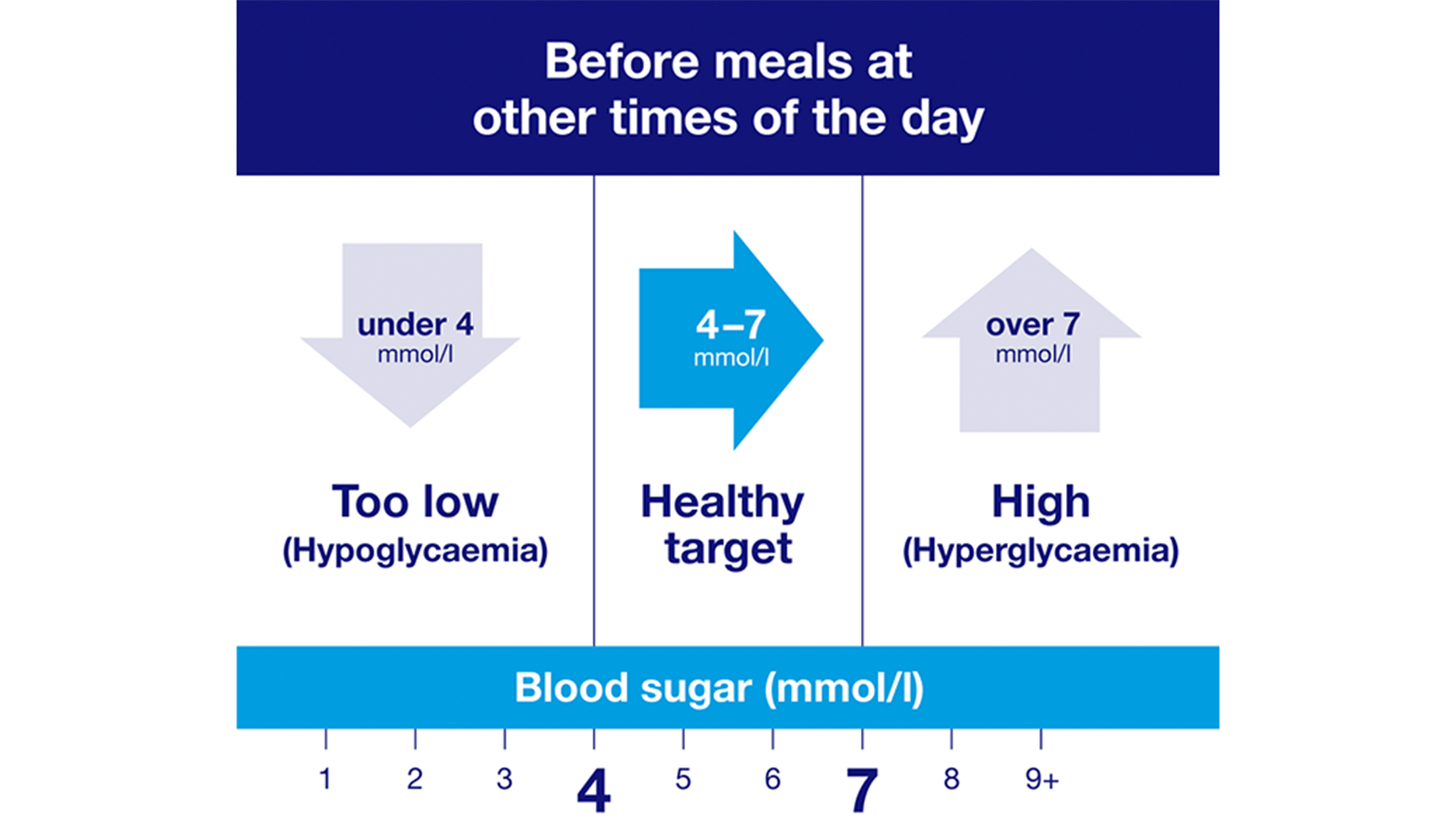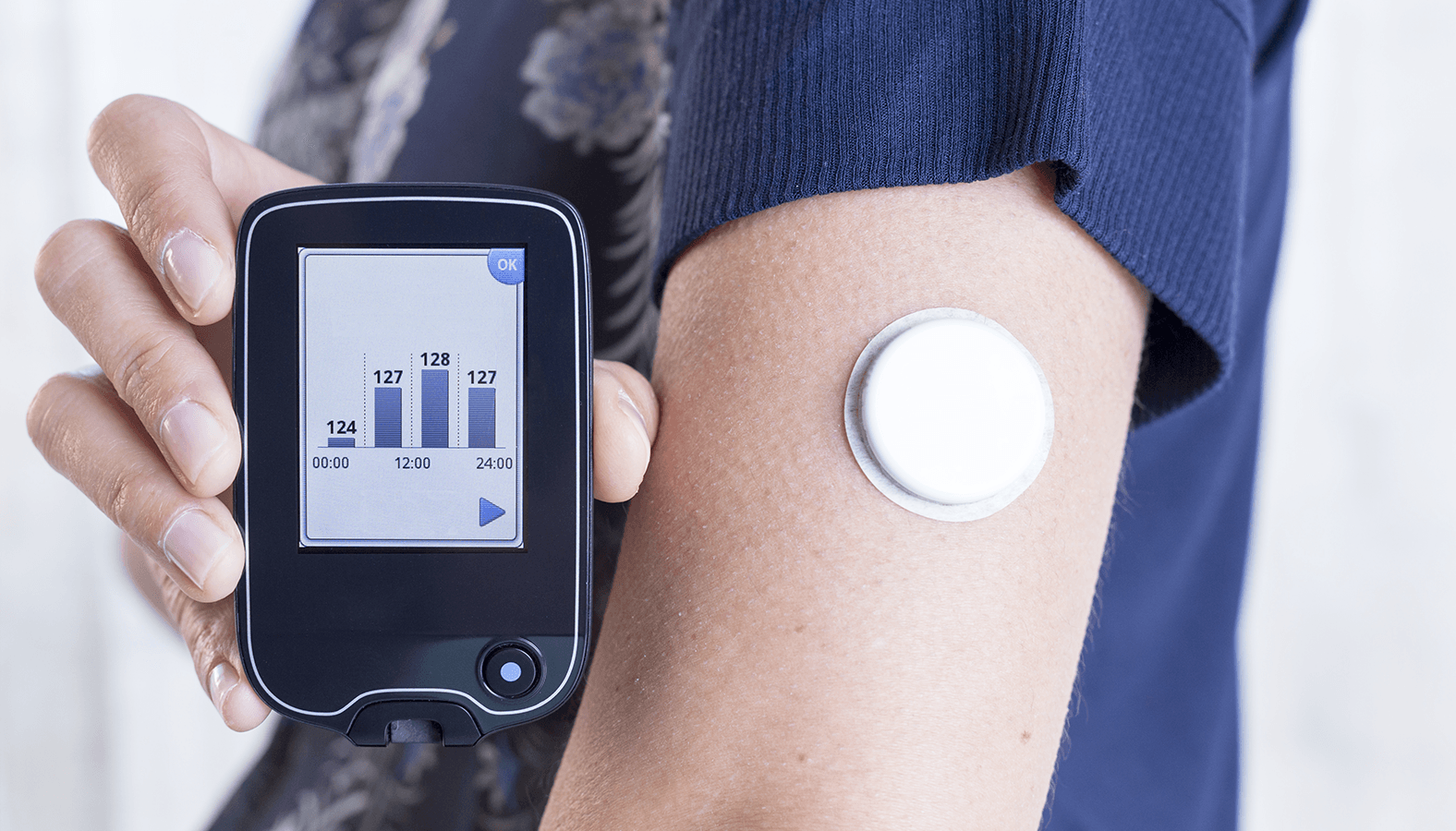If you or your loved ones struggle with maintaining normal blood sugar levels, it’s important to regularly keep track using a blood sugar metre. We’ll share what to expect and factors to consider when measuring your blood sugar. If your family member requires support with diabetic care, please feel free to contact us so that we can match you with a suitable in-home caregiver.
While it may seem intimidating at first, the benefits of regularly monitoring blood sugar levels definitely outweigh the risks. Regularly measuring your blood sugar levels can help identify irregularities, and from there you can seek treatment earlier and reduce long-term health complications. According to the American Diabetes Association, it is especially important for people with high or low blood glucose levels and/or Type 1 or Type 2 diabetes to monitor their blood sugar, so they can take insulin and medication accordingly.
In this article, we’ll explain why it’s important to measure blood sugar levels, how to test blood glucose, and how to choose the right blood sugar metre.
1. Who should check their blood sugar levels?
2. Why do we need to measure our blood sugar levels?
3. What is a normal target range?
4. How do I measure my blood glucose levels?
5. When testing my blood sugar, what should I be aware of?
6. How frequently should I measure my blood sugar?
7. What might affect my results?
8. Why is a blood test more accurate than other tests, such as the urine test?
9. Are there non-invasive alternatives to the finger-prick test?
10. What is the difference between a blood sugar metre and a continuous glucose monitor?
1. Who should check their blood sugar levels?
The elderly would especially benefit from regular monitoring of blood sugar levels, especially those with diabetes (Types 1 and 2) or symptoms of diabetes, so that they can seek treatment earlier if necessary. A recent study found that elderly patients with diabetes were at a higher risk for developing Alzheimer’s disease and vascular dementia by approximately 1.5-fold and 2.5-fold, respectively.
If you aren’t already checking your blood glucose levels, you may consult your doctor to discuss whether you should start. You can also book a service with our nurses to receive professional guidance and diabetic care services.
2. Why do we need to measure our blood sugar levels?
By measuring blood sugar levels using a blood sugar metre, you can identify whether your blood sugar levels are too high or too low from your target range. Every person’s target range can vary, depending on a variety of factors such as age, diet, and genetics. To find out your target range, please consult a medical professional.
If your blood sugar levels are too high from your target range, this could result in Type 2 diabetes diagnosis.
As blood sugar levels increase, the pancreas will eventually not be able to produce enough insulin to meet the body’s demands, so the body becomes resistant to insulin, which will then lead to Type 2 Diabetes.
How we can help:
- Our nurses can help with insulin injections and wound dressing (wounds are difficult to heal for diabetics).
- Our dietitians can help you design a diet change to improve your situation. With proper management, you can reduce your need for insulin injections.
- Book a free consultation or call us at 3905 4000, if you would like to find a private nurse to provide diabetic care services at home.
3. What is a normal target range?
According to diabetes.co.uk, for the majority of healthy individuals, normal blood sugar levels are as follows:
- Between 4.0 to 5.4 mmol/L (72 to 99 mg/dL) when fasting
- Up to 7.8 mmol/L (140 mg/dL) 2 hours after eating
For diabetics, blood sugar level targets are as follows:
- Before meals : 4 to 7 mmol/L for people with type 1 or type 2 diabetes
- After meals : under 9 mmol/L for people with type 1 diabetes and under 8.5mmol/L for people with type 2 diabetes
By monitoring your blood sugar levels, you can minimise the risks and complications associated with high blood sugar and low blood sugar through seeking treatment early. According to Healthline, high blood sugar levels can lead to long-term complications, including diabetes, heart disease, nerve damage, vision problems, poor blood flow and kidney disease. Some of the symptoms of low blood sugar levels include confusion, weakness, dizziness, jitters, and sweating.
The image below represents the healthy target range for adults with Type 1 and Type 2 diabetes before meals at other times of the day.
4. How do I measure my blood sugar levels?
A blood sugar test can tell you how much glucose is in your blood at any given time.
A blood glucose testing kit should come with test strips. You will also need a lancet – a small needle. To perform the test, you need to start by inserting the test strip into the metre. Using a lancet, prick the side of your finger so a drop of blood comes out. Touch and hold the edge of the test strip towards the blood.
Generally, the procedure is very quick: most blood glucose metres will provide results in 5 seconds.
If you need a care professional to assist with blood sugar testing or insulin injections, feel free to check out our home care pricing details to understand our service fees and hourly rates.
you might also like :
5. When testing my blood sugar, what should I be aware of ?
- Always follow the manufacturer’s instructions for your blood glucose metre. Not every blood glucose metres are the same.
- Check the expiry date on all diabetes testing supplies.
- Wash and dry hands to get rid of any contaminants (e.g. sugar on your fingers from the food you have been eating) before glucose testing.
- Use the sides of your fingers, as these are less sensitive than the fingertips. Avoid the thumb and index finger, and vary the testing points on your fingers to avoid the risk of infection or callus build up.
- If you struggle to obtain enough blood, place your hand facing downwards to allow gravity help the blood flow to the fingers.
- Change the lancet in the finger-pricking testing device each time you perform a blood glucose test. This will reduce discomfort, the risk of infection and ensure that enough blood is obtained.
- Do NOT share needles with anyone else to eliminate the risk of HIV.
- Record the results, click here to get access to our free Vital Signs Track Sheet.
Achieve noticeable reductions in blood sugar levels with food. Download our diabetes diet guide below !
6. How frequently should I measure my blood sugar?
The Centre for Health Protection in Hong Kong (CHP) advises you to measure your 2-4 times per week at various times during the day (e.g. before and after eating). You should monitor your blood sugar more often if:
- Your blood glucose often tested too high or too low;
- If you are pregnant or preparing for pregnancy;
- During illness;
- If there are changes in your daily routine, such as a trip abroad, an unusual level of physical exercise, or changes in diet.
7. What might affect my results?
Timing is one of the most important factors when measuring blood sugar.
Do not measure your blood sugar immediately after eating or after exercise to avoid obtaining unreliable results. For instance, if you consume starchy foods rich in carbohydrates, this will cause your blood sugar to rise higher than your normal levels. After exercise, your blood glucose levels may be lower than normal, which may not yield accurate results.
Other factors that might affect your blood sugar levels include illness, hormonal changes (menstrual cycles), stress, and changes in lifestyle (diet, medication, exercise levels).
8. Why is a blood test more accurate than other tests, such as the urine test?
According to the CHP, a blood test is much more accurate than a urine test for two main reasons: a urine test cannot detect low blood glucose, and certain medications may affect the accuracy of the urine test.
9. Are there non-invasive alternatives to the finger-prick test?
Scientists are working to develop many non-invasive blood sugar monitors which could significantly reduce the need for routine finger-prick tests, such as the readers and sensors launched by Freestyle Libre , and the continuous glucose monitors (CGM) developed by Dexcom. However, the finger-prick test will sometimes still be required to recalibrate the device.
10. What is the difference between a blood sugar metre and a continuous glucose monitor?
Like the name suggests, a continuous glucose monitor (CGM) is a wearable device that tracks your glucose levels throughout the day, whilst a blood sugar metre measures your blood sugar one point in time. A CGM would benefit someone with diabetes who struggles with maintaining regular blood sugar levels.
Using a sensor under the skin (which needs to be replaced regularly), the CGM measures your blood sugar every few minutes. On the market, there are water resistant CGMs so users can shower, swim, or exercise.
With a CGM, regular finger-prick tests aren’t necessary, but if your symptoms don’t match the system readings, you will likely need to conduct a finger-prick blood glucose test.
Consult your doctor about using a CGM if you’re pregnant, on dialysis or critically ill, as these conditions may affect the blood sugar readings from a CGM.
Choosing the right blood glucose metre
Before choosing a blood glucose metre, it is best to consult with your doctor and consider various factors, especially costs and insurance coverage. Accessibility is also an important factor: Is the monitor easy to use? Would the results be easy to read? After weighing out all your options, you can choose the blood glucose metre that is best for you.
其他話題 Other Topics
最新的文章 Latest Posts

喜歡我們的文章嗎?
超過3,000位照顧者已經訂閱我們的資訊!訂閱我們的資訊,你可獲得免費護理工具、專家護理知識和同路人分享。立即訂閱,也可以隨時取消。請在此填寫你的姓名和電郵地址:
Phone: 3905 4000
WhatsApp: 6114
4595
Email:
[email protected]
Employment Agency License No: 66596
Office Hours: Mon-Sun, 8:00am - 9:00pm





